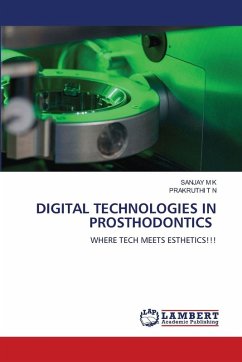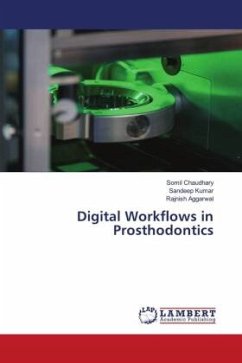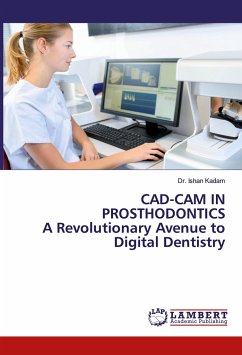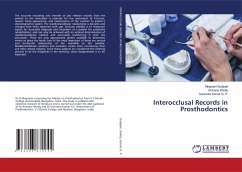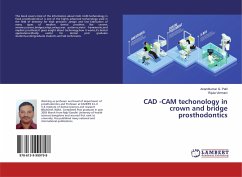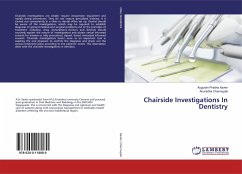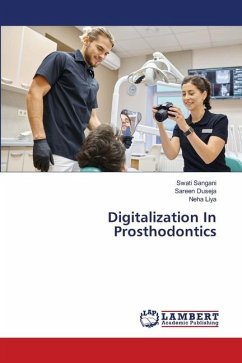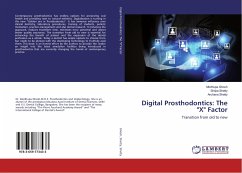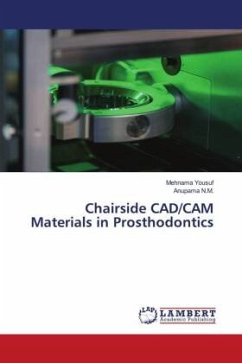
Chairside CAD/CAM Materials in Prosthodontics
Versandkostenfrei!
Versandfertig in 6-10 Tagen
45,99 €
inkl. MwSt.

PAYBACK Punkte
23 °P sammeln!
CAD/CAM technology was introduced in dentistry in the year 1989 by Mormann & Brandestinni in Germany and today it is widely used in all the branches of prosthodontics.Using CAD/CAM technology, various types of restorations and dental prostheses can be designed and machined with accuracy and precision.Chairside CAD/CAM systems have evolved through a series of software and hardware which offer a three-dimensional (3-D) design program and can fabricate inlays, onlays, veneers, crowns, as well as three-unit bridges and custom implant abutments.With the latest improvements in the software, it is po...
CAD/CAM technology was introduced in dentistry in the year 1989 by Mormann & Brandestinni in Germany and today it is widely used in all the branches of prosthodontics.Using CAD/CAM technology, various types of restorations and dental prostheses can be designed and machined with accuracy and precision.Chairside CAD/CAM systems have evolved through a series of software and hardware which offer a three-dimensional (3-D) design program and can fabricate inlays, onlays, veneers, crowns, as well as three-unit bridges and custom implant abutments.With the latest improvements in the software, it is possible to produce a more clinically acceptable marginal fit of the milled restorations. The design and manufacturing process involve optically scanning and digitizing dies created from the master impression of the prepared teeth/cores, so that the dimensions of the margins may be duplicated precisely.The scanned 3-dimensional images of the dies are then used to design the substructure, prompted by computer software.The CAD unit is linked to a robotic CAM center that creates a restoration according to the design specifications.



